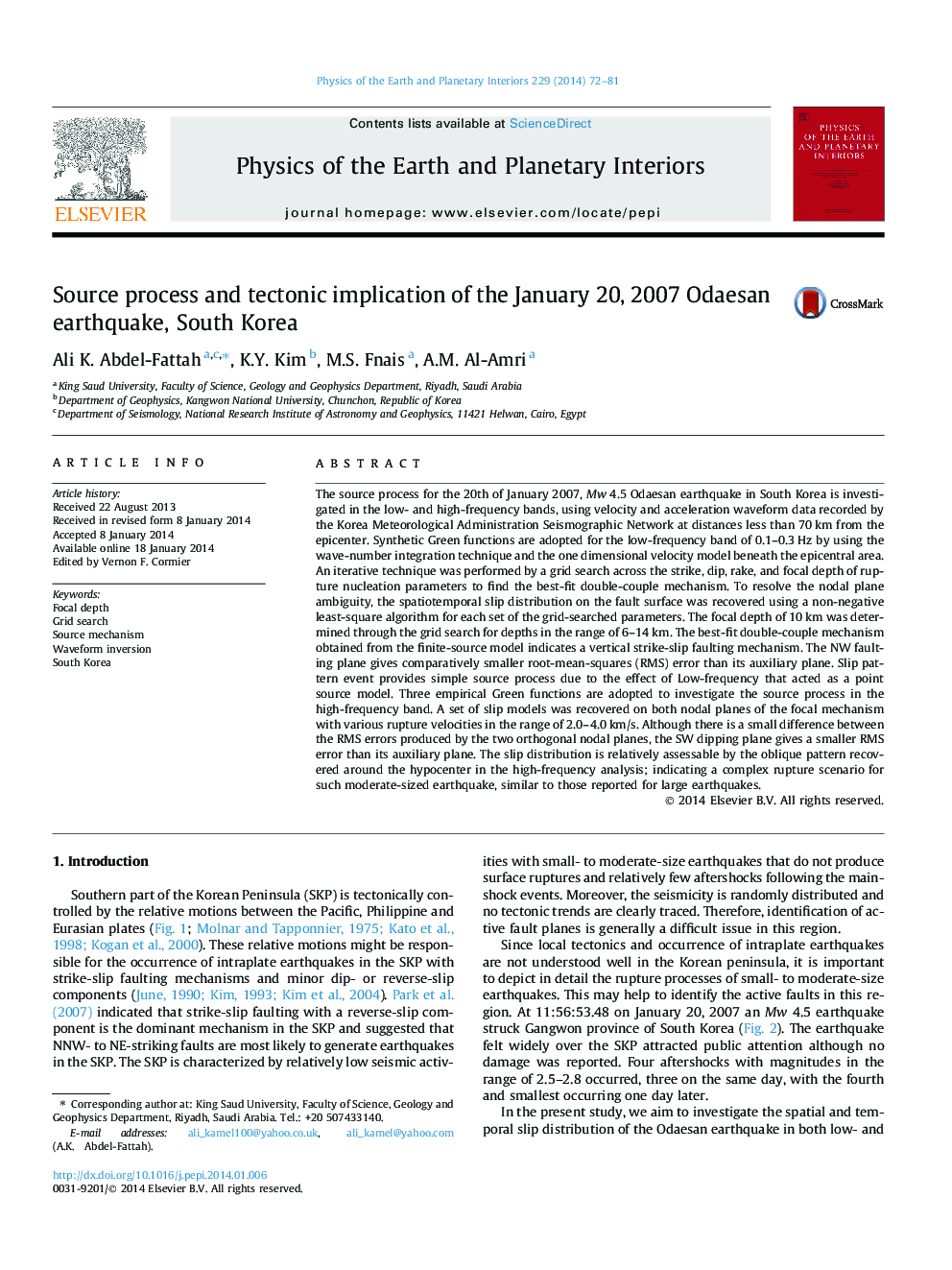| کد مقاله | کد نشریه | سال انتشار | مقاله انگلیسی | نسخه تمام متن |
|---|---|---|---|---|
| 4741629 | 1641512 | 2014 | 10 صفحه PDF | دانلود رایگان |

• Determine focal mechanisms.
• Waveform inversion to recover slip distribution over fault plane.
• Determinate the slipped fault plane.
The source process for the 20th of January 2007, Mw 4.5 Odaesan earthquake in South Korea is investigated in the low- and high-frequency bands, using velocity and acceleration waveform data recorded by the Korea Meteorological Administration Seismographic Network at distances less than 70 km from the epicenter. Synthetic Green functions are adopted for the low-frequency band of 0.1–0.3 Hz by using the wave-number integration technique and the one dimensional velocity model beneath the epicentral area. An iterative technique was performed by a grid search across the strike, dip, rake, and focal depth of rupture nucleation parameters to find the best-fit double-couple mechanism. To resolve the nodal plane ambiguity, the spatiotemporal slip distribution on the fault surface was recovered using a non-negative least-square algorithm for each set of the grid-searched parameters. The focal depth of 10 km was determined through the grid search for depths in the range of 6–14 km. The best-fit double-couple mechanism obtained from the finite-source model indicates a vertical strike-slip faulting mechanism. The NW faulting plane gives comparatively smaller root-mean-squares (RMS) error than its auxiliary plane. Slip pattern event provides simple source process due to the effect of Low-frequency that acted as a point source model. Three empirical Green functions are adopted to investigate the source process in the high-frequency band. A set of slip models was recovered on both nodal planes of the focal mechanism with various rupture velocities in the range of 2.0–4.0 km/s. Although there is a small difference between the RMS errors produced by the two orthogonal nodal planes, the SW dipping plane gives a smaller RMS error than its auxiliary plane. The slip distribution is relatively assessable by the oblique pattern recovered around the hypocenter in the high-frequency analysis; indicating a complex rupture scenario for such moderate-sized earthquake, similar to those reported for large earthquakes.
Journal: Physics of the Earth and Planetary Interiors - Volume 229, April 2014, Pages 72–81